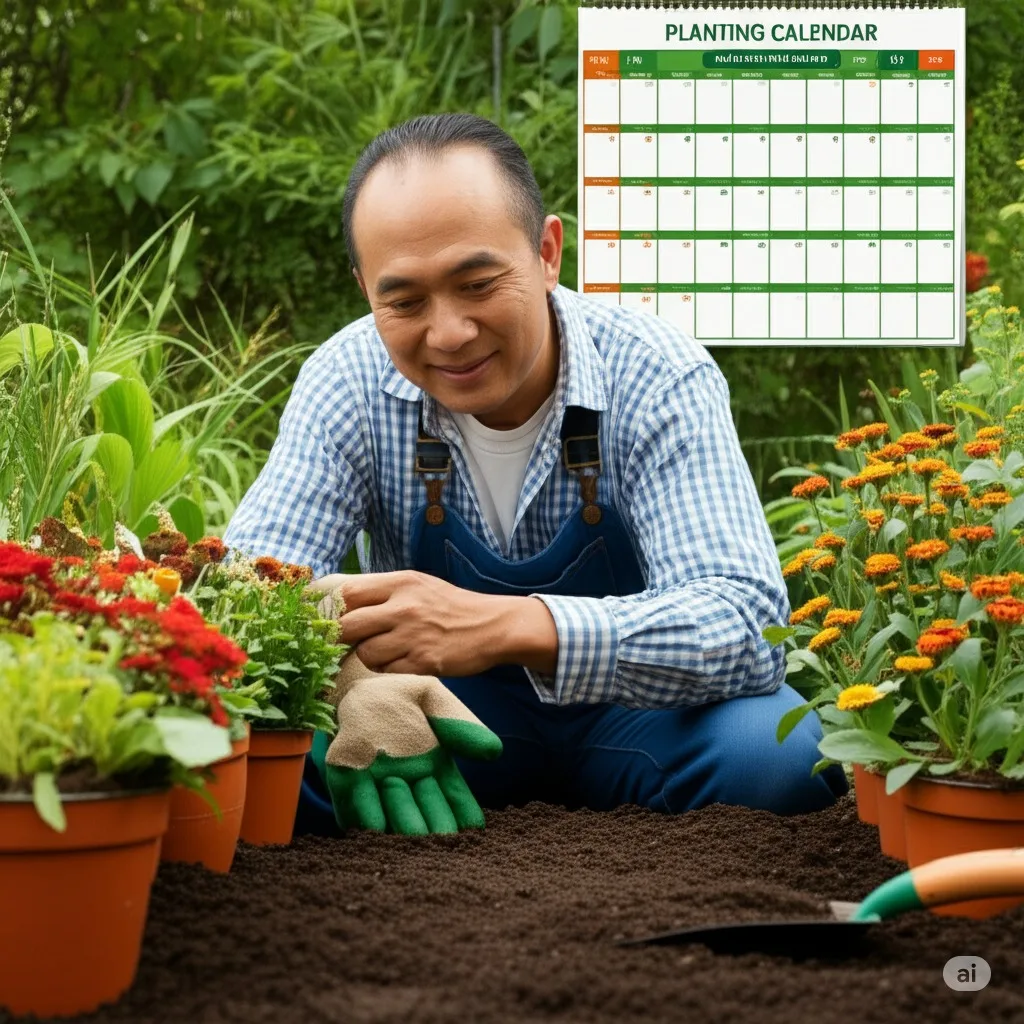The Ultimate 2025 Planting Calendar: Your Month-by-Month Guide to a Thriving Eco-Garden
Welcome, fellow EcoDwellers! There’s an unparalleled joy in watching a tiny seed sprout into a flourishing plant, providing food for your table or beauty for your soul. Creating a vibrant, productive, and eco-friendly garden is a deeply rewarding experience, and a well-thought-out 2025 Planting Calendar is your secret weapon for success. As someone who has embraced my green journey for years, I’ve learned that timing is everything in gardening. This comprehensive guide will walk you through each month of 2025, offering actionable advice on what to plant, essential garden tasks, and eco-tips to ensure your garden thrives sustainably.
Whether you have a sprawling backyard or a cozy balcony, this calendar will help you maximize your harvest, work in harmony with nature, and deepen your connection to the food you eat and the environment you nurture. Let’s dig in and make 2025 your most fruitful gardening year yet, drawing on principles from The EcoDweller’s Guide to Sustainable Living!
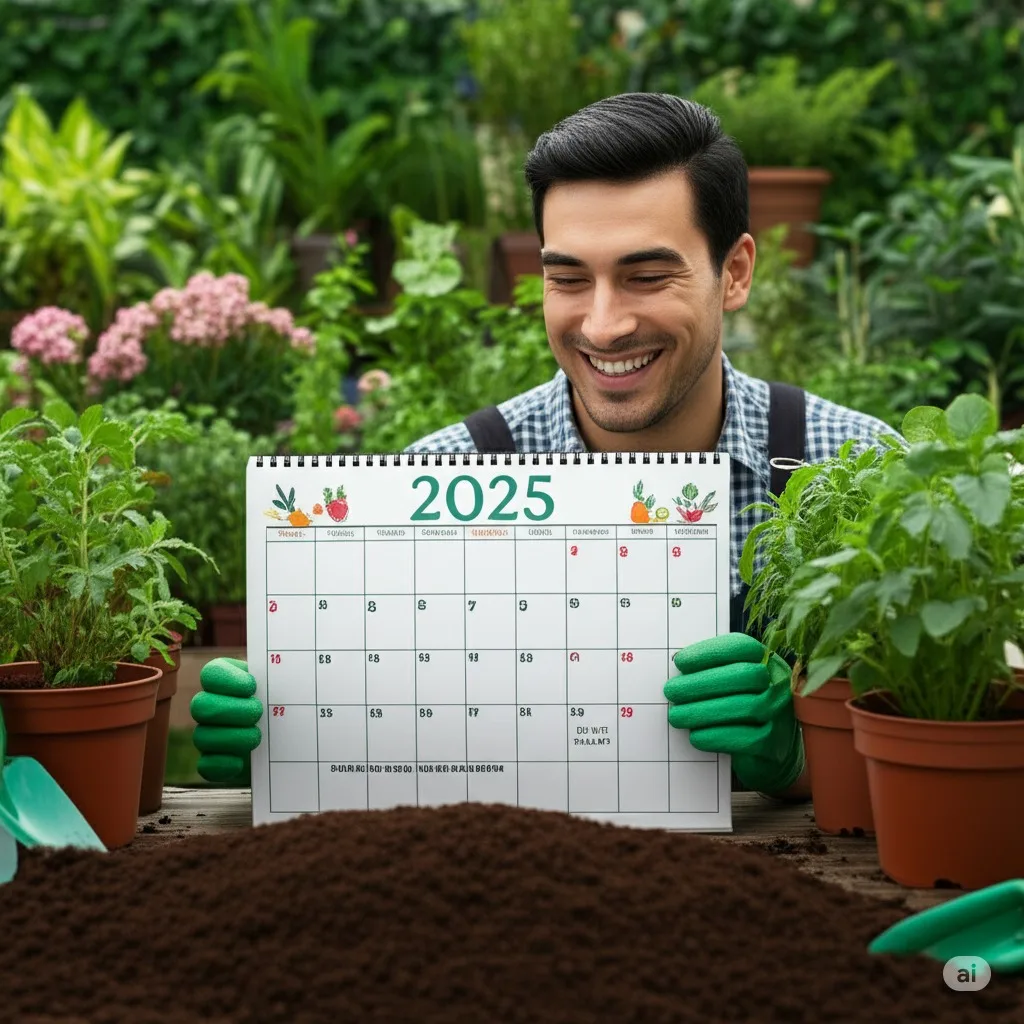
Why a Planting Calendar is Your Garden’s Best Friend
A planting calendar isn’t just a schedule; it’s a strategic tool that empowers you to make informed decisions. It helps you understand the optimal times for sowing seeds, transplanting seedlings, and harvesting crops based on your general climate. This proactive approach leads to healthier plants, better yields, and less wasted effort and resources—a core tenet of starting green living.
- Maximizes Yields: Planting at the right time ensures plants have ideal conditions for growth.
- Reduces Waste: Avoids planting too early (frost risk) or too late (insufficient growing season).
- Efficient Pest & Disease Management: Healthy, well-timed plants are more resilient.
- Water Conservation: Aligning planting with seasonal rainfall can reduce irrigation needs, a key tip from our water conservation guide.
- Seasonal Eating: Enjoy fresh, seasonal produce straight from your garden.
- Increased harvest success rates by up to 40%.
- Reduced seed and seedling loss due to improper timing.
- Better resource management (water, fertilizer, time).
- Opportunity to plan for succession planting for continuous harvests.
A Note on Climate Zones: This calendar provides general guidelines suitable for many temperate climates. For precise timing, identify your USDA Plant Hardiness Zone (or local equivalent) and consult local extension offices. However, the principles and monthly tasks here offer a solid foundation for any eco-gardener.
Your 2025 Month-by-Month Planting Calendar
January: Planning & Indoor Starts
January is a month of reflection and preparation. Dream about your future garden, order seeds, and start some slow-growing crops indoors.
- Vegetables (Indoor Starts): Onions, leeks, celery, very early peppers, and eggplant (if you have a long, warm growing season or greenhouse).
- Herbs (Indoor Starts): Parsley, chives, oregano.
- Garden Tasks:
- Plan your garden layout. Consider crop rotation and companion planting.
- Order seeds and supplies. Check out eco-friendly gardening products.
- Clean and sharpen tools.
- Check stored tubers (dahlias, potatoes) for rot.
February: More Indoor Sowing & Early Outdoor Prep
Continue indoor sowing. If your climate is mild, you might begin some outdoor preparations or even plant very hardy crops under protection.
- Vegetables (Indoor Starts): Tomatoes (mid-month for most), broccoli, cabbage, cauliflower, lettuce. Early peas can be started indoors for a head start.
- Herbs (Indoor Starts): Basil (late month), thyme, rosemary.
- Flowers (Indoor Starts): Pansies, violas, snapdragons.
- Garden Tasks:
- Prepare seedbeds on mild days if soil isn’t frozen or waterlogged. Add compost.
- Set up cold frames or hoop tunnels for early outdoor planting.
- Prune fruit trees and bushes (dormant pruning).
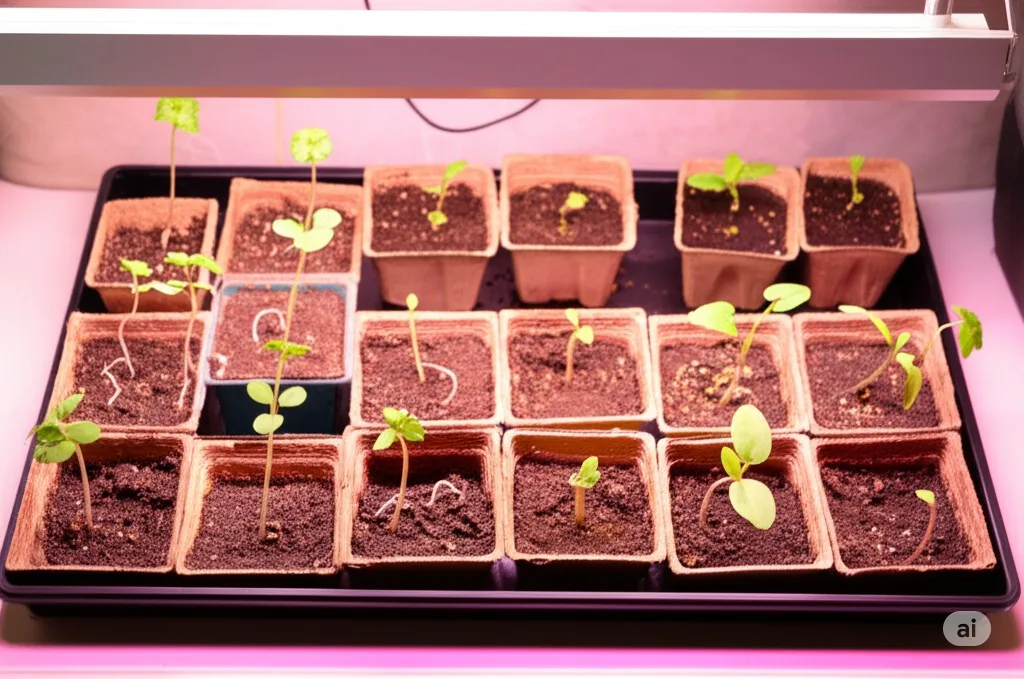
March: Spring Awakens – Outdoor Sowing Begins
Spring is in the air! Depending on your last frost date, you can start sowing hardy vegetables directly outdoors and transplanting some early starts.
- Vegetables (Direct Sow Outdoors): Peas, spinach, radishes, carrots, turnips, kale, mustard greens.
- Vegetables (Transplant Outdoors, if hardened off): Broccoli, cabbage, cauliflower seedlings started indoors.
- Herbs (Direct Sow Outdoors): Dill, cilantro.
- Garden Tasks:
- Harden off indoor seedlings before transplanting.
- Weed beds before they get established.
- Install plant supports for peas and beans.
April: Busy Planting Month
April is a prime planting month for many crops. The soil is warming, and the risk of hard frost diminishes for many.
- Vegetables (Direct Sow Outdoors): Beets, Swiss chard, more lettuce, arugula, potatoes.
- Vegetables (Transplant Outdoors): Hardened-off tomatoes (late April, protect if frost threatens), peppers, eggplant.
- Herbs (Direct Sow/Transplant): Most herbs can be planted out now.
- Flowers (Direct Sow): Sunflowers, nasturtiums, calendula.
- Garden Tasks:
- Mulch around plants to conserve moisture and suppress weeds.
- Begin regular watering if rainfall is insufficient.
- Watch for early pests like aphids.
- Establishes strong root systems before summer heat.
- Early harvests of cool-season crops.
- Reduces pest pressure compared to later plantings for some crops.
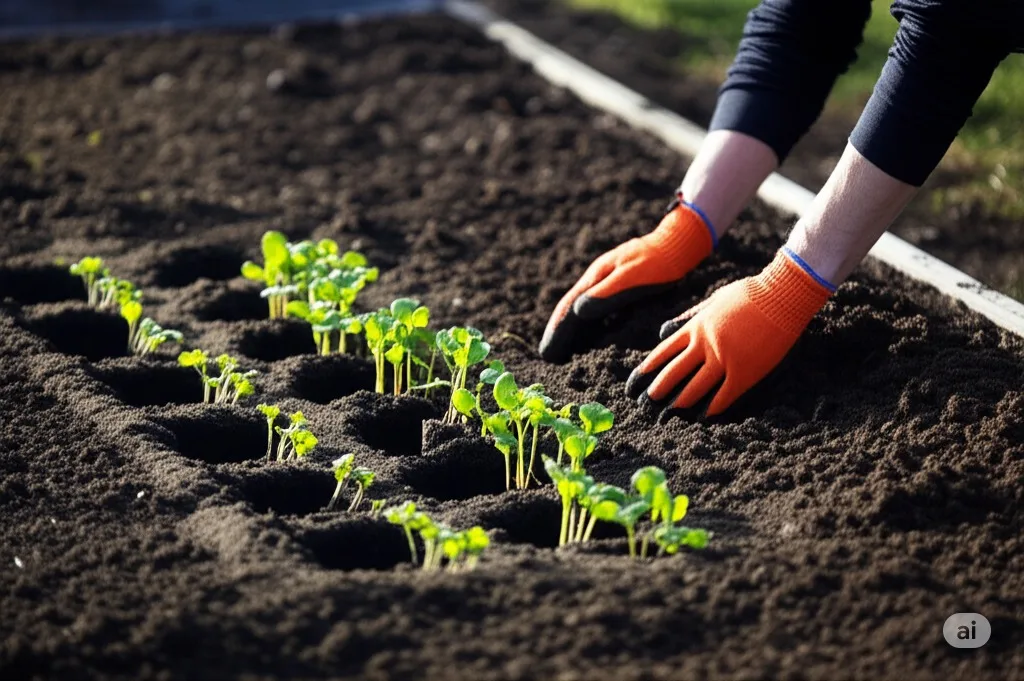
May: Warm-Season Crops Take Center Stage
After the last expected frost, it’s time to plant tender, warm-season crops. The garden really starts to take off now!
- Vegetables (Direct Sow/Transplant): Beans (bush and pole), corn, cucumbers, squash (summer and winter), pumpkins, melons. Transplant remaining tomatoes, peppers, and eggplant.
- Herbs: Continue planting any remaining herbs. Basil thrives in warmth.
- Flowers: Zinnias, marigolds, cosmos.
- Garden Tasks:
- Provide support for tomatoes, pole beans, and cucumbers.
- Thin out directly sown seedlings.
- Begin succession planting of quick crops like lettuce and radishes.
June: Growth, Maintenance & Early Harvests
June is about maintaining momentum. Water regularly, weed diligently, and enjoy the first tastes of your summer harvest.
- Vegetables (Succession Sow): Beans, carrots, beets, lettuce (heat-tolerant varieties).
- Garden Tasks:
- Water deeply and less frequently to encourage deep roots.
- Monitor for pests and diseases; act quickly with organic solutions.
- Harvest early crops like peas, spinach, radishes, and early lettuce.
- Side-dress heavy feeders like tomatoes and corn with compost.
July: Peak Summer & Fall Planting Prep
Enjoy the bounty of summer! Keep harvesting and start thinking about crops for a fall garden.
- Vegetables (Harvest): Tomatoes, peppers, beans, squash, cucumbers, early potatoes.
- Vegetables (Plant for Fall): Broccoli, cauliflower, cabbage (seedlings), carrots, beets, kale, spinach.
- Garden Tasks:
- Water consistently, especially during dry spells. Early morning is best.
- Continue pest and disease monitoring.
- Deadhead flowers to encourage more blooms.
- Preserve excess harvest by canning, freezing, or drying. Explore tips in our kitchen waste guide for using everything.
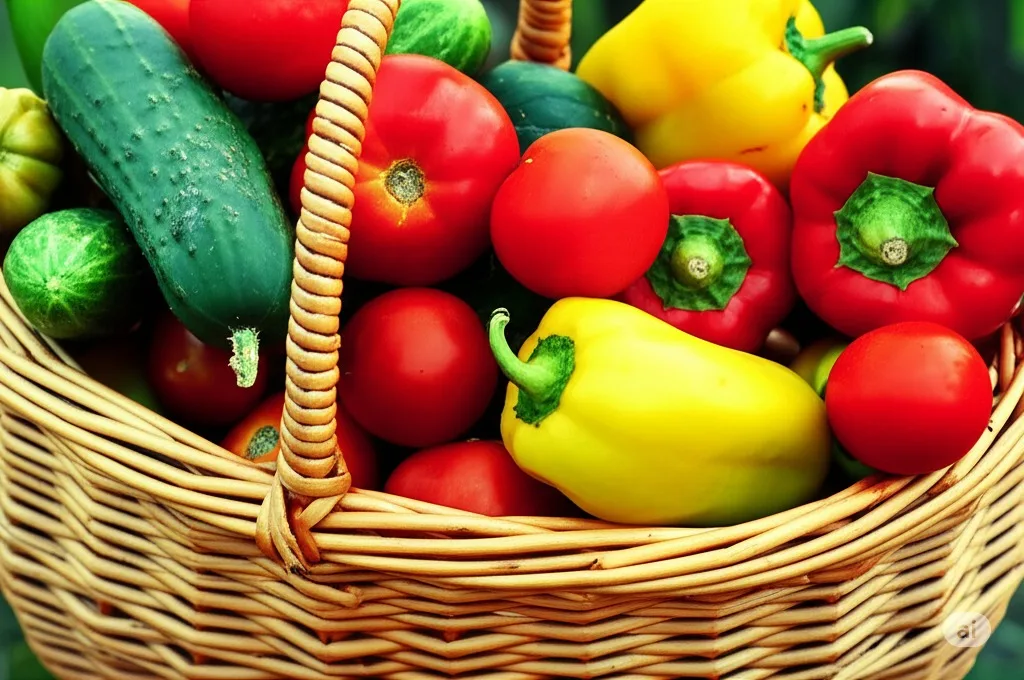
August: Continued Harvest & Late Summer Sowing
The harvest continues! It’s also the last chance for planting some fast-maturing fall crops.
- Vegetables (Harvest): Melons, pumpkins, winter squash, maincrop potatoes.
- Vegetables (Plant for Fall/Winter): Lettuce, spinach, radishes, arugula, mustard greens, turnips. Plant garlic in late August/September for next year’s harvest.
- Garden Tasks:
- Remove spent plants to prevent disease buildup. Add to compost if healthy.
- Order cover crop seeds for fall soil improvement.
- Plan your garlic and shallot beds for fall planting.
September: Fall Gardening & Clean-Up
Cooler weather signals a shift. Harvest remaining summer crops and focus on fall vegetables and garden clean-up.
- Vegetables (Plant): Garlic, shallots. Cover crops like rye or vetch.
- Vegetables (Harvest): Last of the warm-season crops. Fall cool-season crops will start maturing.
- Garden Tasks:
- Plant cover crops in empty beds to protect and enrich soil.
- Start general garden clean-up, removing diseased plants.
- Divide perennials.
- Bring tender herbs indoors.
October: Final Harvests & Winter Prep
Harvest remaining crops before hard frosts. Prepare your garden for winter.
- Vegetables (Harvest): Root vegetables (carrots, beets, parsnips can be left in ground with mulch), kale, Brussels sprouts (taste better after a light frost).
- Garden Tasks:
- Protect late crops from frost with row covers or cloches.
- Enrich beds with compost or manure for next spring.
- Clean and store tools. Drain hoses and irrigation systems.
- Mulch perennial beds and around fruit trees.
November: Garden Tuck-In & Reflection
The garden is mostly dormant. Finish winter preparations and reflect on the season.
- Garden Tasks:
- Ensure all tender plants are protected or brought indoors.
- Protect young trees and shrubs from winter animal damage.
- Review your garden journal: what worked, what didn’t? Start planning for next year.
December: Rest & Dream
The garden sleeps. It’s a time for rest, perusing seed catalogs, and dreaming of spring.
- Garden Tasks:
- Check stored seeds for viability.
- Browse seed catalogs and websites for new varieties.
- Plan any new garden structures or changes for next year.
Essential Tools for Your Planting Year
Free/Low-Cost Tools:
- Repurposed containers for seedlings (yogurt cups, egg cartons)
- Homemade compost and leaf mold
- Sticks and twine for plant supports
- Your hands! (The best gardening tool)
Recommended Paid Tools:
- Good quality hand trowel and spade (see options on Amazon affiliate link)
- Sturdy watering can or hose with adjustable nozzle (find yours on Amazon affiliate link)
- Organic seeds from reputable suppliers
- Row covers or cloches for season extension (browse on Amazon affiliate link)
- Wheelbarrow or garden cart for moving soil and compost
Companion Planting for a Healthier Eco-Garden
Companion planting is the practice of growing certain plants together for mutual benefit, such as pest deterrence, attracting pollinators, or improving soil. It’s a cornerstone of organic gardening.
| Plant | Good Companions | Avoid Planting With |
|---|---|---|
| Tomatoes | Basil, carrots, marigolds, onions | Potatoes, fennel, corn |
| Beans | Carrots, corn, cucumbers, marigolds | Onions, garlic, fennel |
| Lettuce | Carrots, radishes, strawberries, cucumbers | Celery (can compete heavily) |
| Cucumbers | Beans, corn, peas, radishes, sunflowers | Potatoes, aromatic herbs (e.g., sage) |
This is a simplified table. Research specific companions for best results!
Ready to Grow in 2025?
This 2025 Planting Calendar provides a roadmap to a productive and joyful gardening year. Remember that gardening is a continuous learning process. Don’t be afraid to experiment, observe, and adapt these guidelines to your specific location and conditions. The most important thing is to get your hands dirty and enjoy the journey of nurturing life from the soil, a fundamental aspect of the EcoDweller philosophy.
What are your biggest gardening aspirations for 2025? Do you have any favorite planting tips or tricks? Share your thoughts and plans in the comments below – I’d love to hear from our community of EcoDwellers! For more inspiration, explore our other articles on sustainable living and beginner eco-tips.

